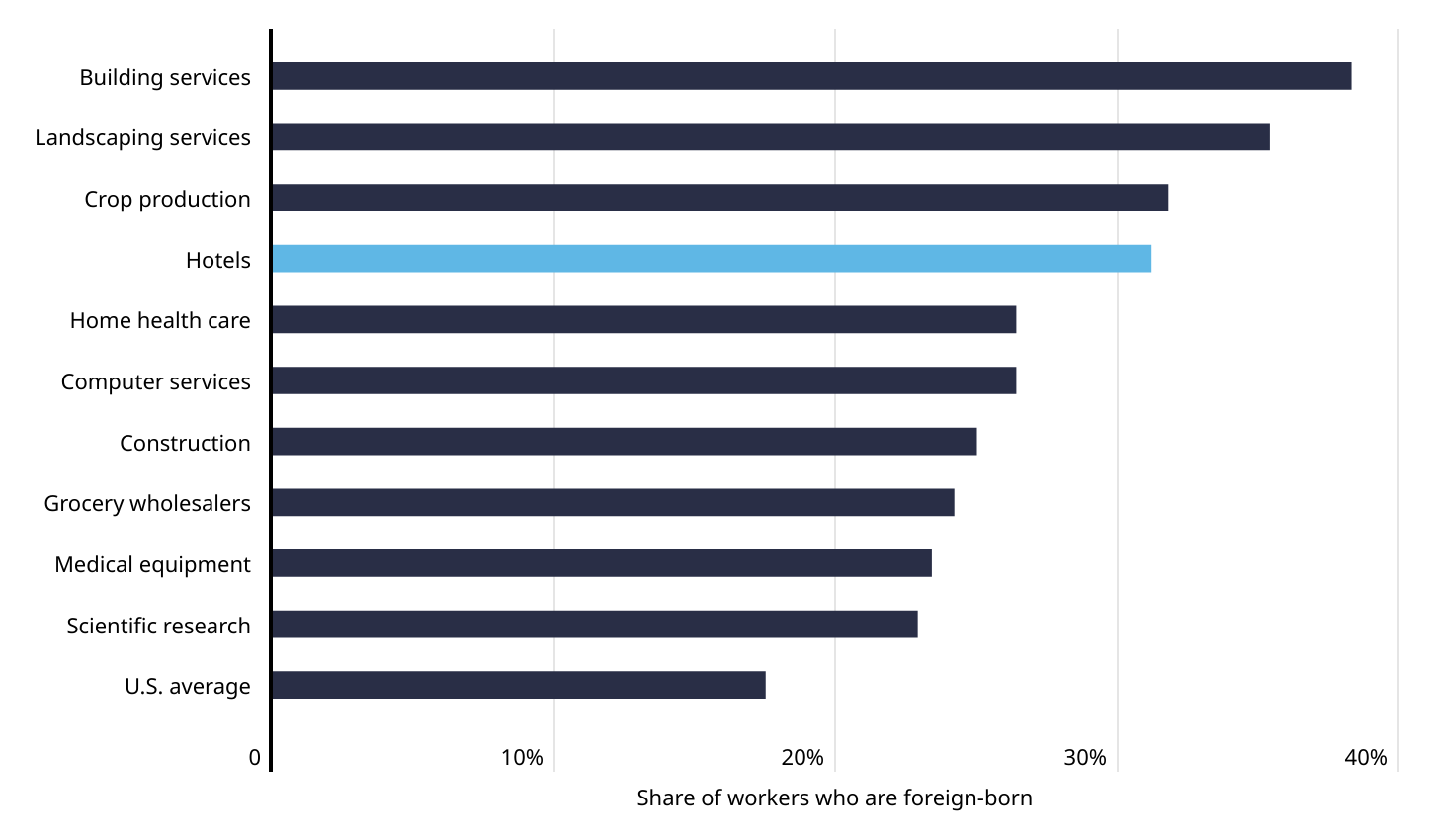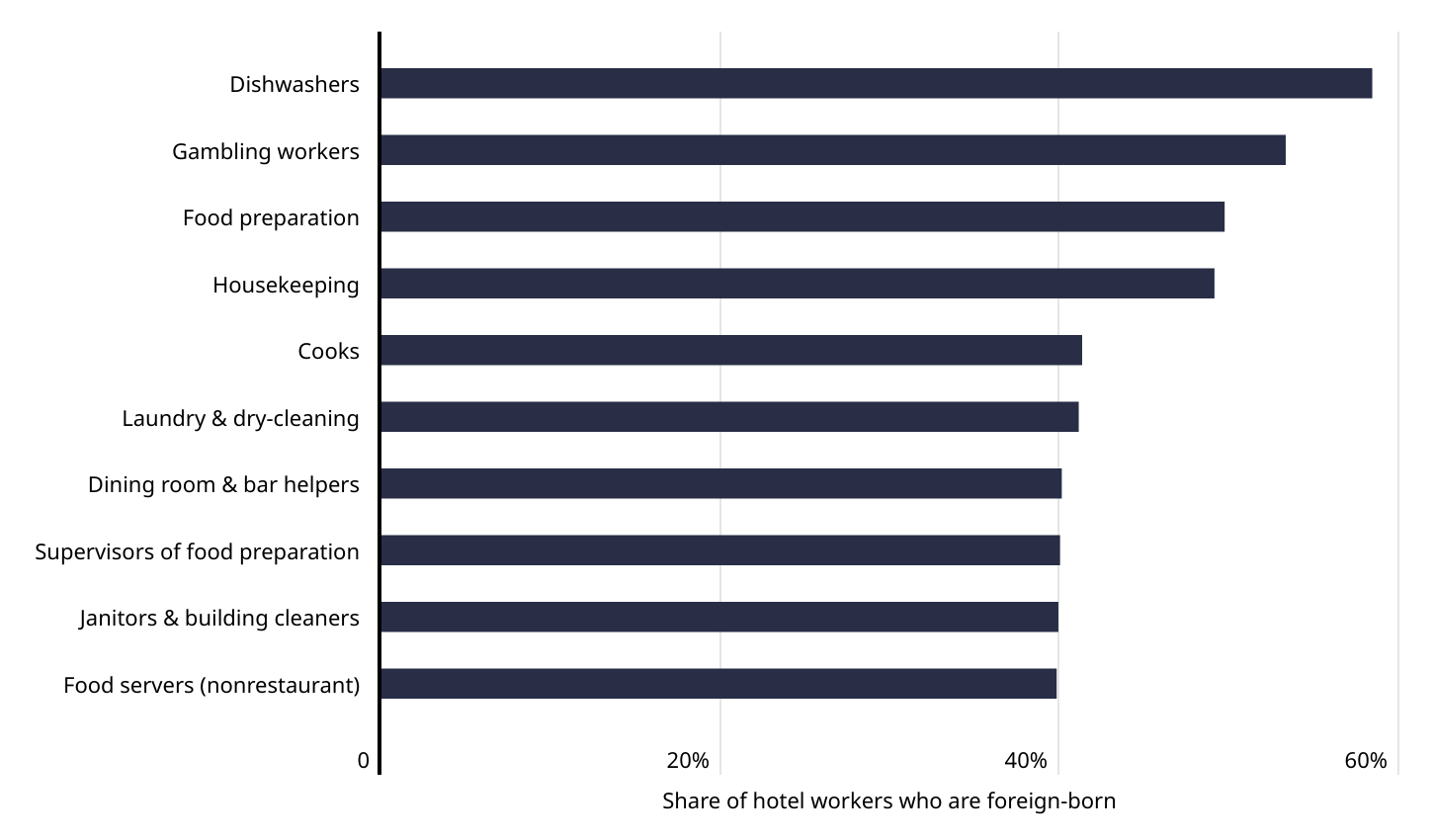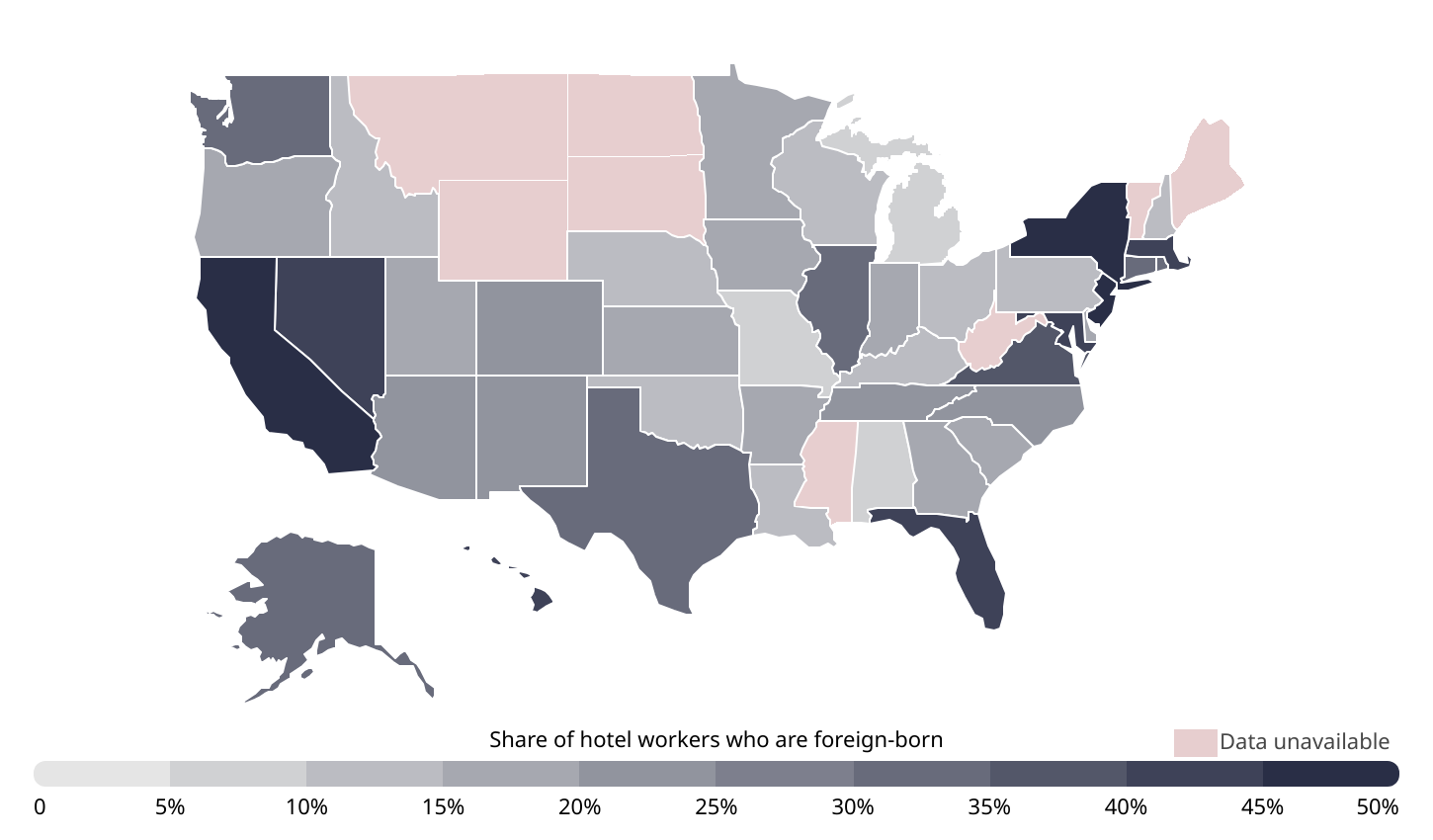
As the federal government ramps up immigration enforcement, including efforts that could target even some naturalized citizens through a process known as denaturalization, concerns are growing about how these actions could ripple through the U.S. economy. While denaturalization cases remain rare, they are part of a broader policy shift that puts more foreign-born workers at risk of removal. For industries that rely heavily on immigrant labor, these changes raise serious questions about workforce stability.
Foreign-born individuals make up approximately 17.5% of the total U.S. labor force, according to the latest data from the U.S. Census Bureau. However, their presence varies widely by sector. Major industries such as agriculture, construction, health care, and hospitality rely disproportionately on foreign-born workers to fill essential roles.
In light of these policy changes, Luxury Link—a luxury hotel booking platform—analyzed data from the U.S. Census Bureau to examine the extent to which the hotel sector depends on foreign-born labor. This analysis identifies the types of roles most frequently held by foreign-born workers, as well as the cities and states where hotels are most reliant on this segment of the workforce.
How Much Does the Hotel Industry Rely on Foreign Workers?
More than 31% of U.S. hotel workers are foreign-born—the 4th highest among the nation’s largest industries

The hotel industry is one of the most dependent sectors in the U.S. economy when it comes to foreign-born labor. According to the latest Census Bureau data, more than 31% of workers in the traveler accommodation sector—which includes hotels, motels, and resorts—are foreign-born. This ranks the industry fourth among the 50 largest private-sector industries by total employment.
Only building services (38.3%), landscaping services (35.4%), and crop production (31.8%) have higher shares of foreign-born workers. Notably, the hotel sector surpasses other labor-intensive fields such as home health care (26.4%) and construction (25.0%). Even industries often associated with high-skill employment, like computer services and scientific research, show significant but comparatively lower reliance on foreign-born employees.
TRENDING THIS SUMMER
Looking for vibrant nightlife, luxurious beachfront suites, and unforgettable cultural excursions? Stay at a Riviera Maya luxury hotel this summer. Whether snorkeling coral reefs, enjoying rooftop cocktails, or visiting ancient Mayan temples, these resorts offer a dynamic escape tailored to both relaxation and adventure seekers.
Which Hotel Industry Jobs Have the Most Foreign-Born Workers?
Foreign-born workers are highly concentrated in food service and custodial occupations

Foreign-born workers are most prevalent in hotel jobs that involve food service, cleaning, and behind-the-scenes operations. Among the top 50 hotel occupations by total employment, dishwashers stand out, with 58.4% of workers born outside the United States—the highest share of any hotel job. This is followed closely by gambling service workers (53.3%)—a role that includes casino floor staff, dealers, and other jobs supporting gaming operations in casino hotels.
Nearly half of food preparation workers (49.7%) and housekeepers (49.1%) are foreign-born, along with significant shares of cooks (41.3%), laundry and dry-cleaning workers (41.1%), and dining room helpers (40.1%). Even supervisory positions in food preparation show similar patterns, with foreign-born individuals making up 40% of the workforce in those roles.
These concentrations reflect long-standing labor trends in the hospitality industry, where foreign workers often fill essential, physically demanding positions that support hotel operations from the ground up.
IT’S TIME TO VISIT CANCUN
A Cancun 5-star hotel offers the perfect blend of luxury and relaxation, with white-sand beaches, world-class amenities, and lush tropical views. Unwind with spa treatments, savor gourmet cuisine, or explore nearby Mayan ruins—all in a setting of refined elegance.
Share of Hotel Workers Who Are Foreign-Born by Location
Foreign workers account for a majority of hotel staff in popular tourist destinations

In several of the nation’s largest cities, foreign-born workers make up a majority of hotel staff. Nowhere is this more evident than in Miami-Fort Lauderdale-West Palm Beach, where 65.1% of hotel employees were born outside the United States—the highest share among major U.S. metros. The San Francisco-Oakland-Hayward area follows closely at 64.9%, while New York-Newark-Jersey City reports a foreign-born share of 56.4%. These urban centers are not only global tourism destinations but also home to large and longstanding immigrant populations, which supply much of the labor for the hospitality sector.
These metro-level figures mirror broader state-level trends. In California, 47.7% of hotel workers are foreign-born, the highest percentage among all states. New York (46.7%), New Jersey (45.0%), Nevada (44.6%), and Hawaii (43.6%) also rank near the top, reflecting both their tourism-driven economies and their demographic diversity. Other high-ranking states include Maryland (43.3%), Florida (42.8%), and Massachusetts (40.8%), where strong tourism industries coincide with sizable immigrant populations.
By contrast, states with smaller immigrant communities in the South and Midwest tend to rely less on foreign-born labor—and, more broadly, see less tourism. In Alabama, just 5.7% of hotel workers are foreign-born—the lowest share in the nation. Other states in these regions, such as Michigan (8.8%), Missouri (9.5%), and Kentucky (11.6%), report similarly low rates.
Below is a complete breakdown of the states and cities whose hotel sectors depend most on foreign-born workers. For more information on how the analysis was conducted, see the methodology section.
Full Results
Methodology
This analysis uses data from the 2023 American Community Survey (ACS) 5-Year Estimates, published by the U.S. Census Bureau. It focuses on individuals employed in the “Traveler Accommodation” sector, which includes hotels, motels, and related establishments. Within this sector, the share of workers who are foreign-born was calculated. The foreign-born population includes both naturalized U.S. citizens and non-citizens.
In addition to the percentage of foreign-born workers within the hotel sector, the analysis includes total counts of foreign-born workers in the sector, total employment in the sector, and the percentage of all workers—across all sectors—who are foreign-born in each geographic area.
To ensure data reliability, locations with disproportionately large margins of error in foreign-born worker estimates were excluded from the analysis.




